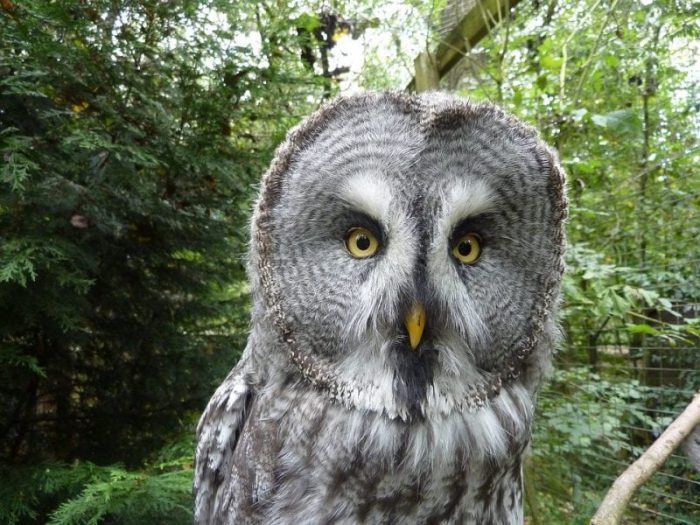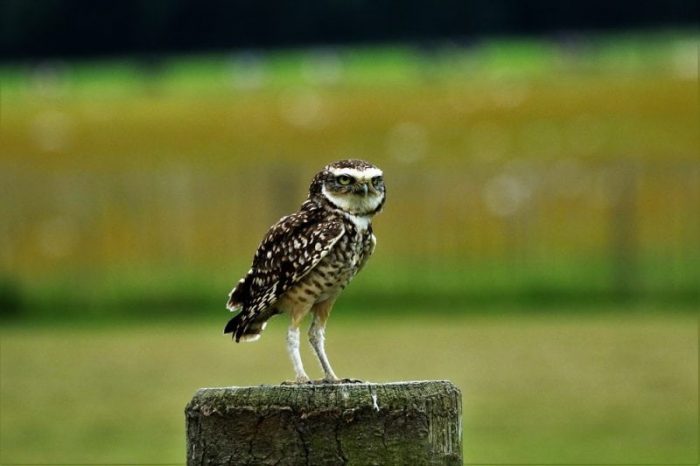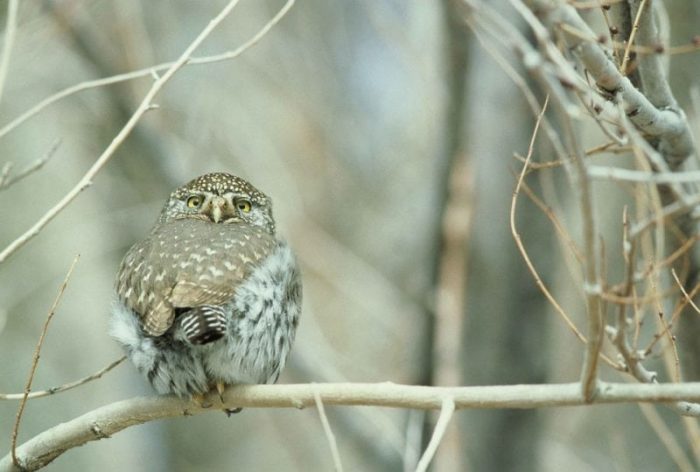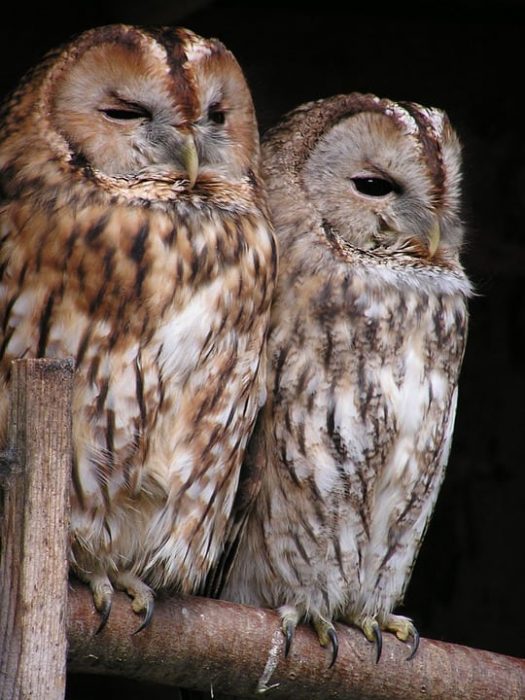
Owls eat other living things as they are carnivores, including a variety of small animals, rats, mice, birds, amphibians, small mammals, rabbits, moles, and skunks. Owls are also known to eat insects, spiders, lizards, frogs, and snails.
Owls are mysterious creatures, probably owing much to the fact that they are nocturnal and quiet, thus they aren’t really seen by most people. One of the questions that many people have about owls is: What do owls subsist on? What do owls eat and drink to survive? As birds of prey, you would think that they simply eat small mammals, but in truth different species of owls can subsist on a variety of different meals.
Since the diet of owls varies between different types of owls, it would be helpful to talk about the various types of owls, in addition to providing some general information about them.
General Information About Owls
Owls have rounded bodies, small years, and large eyes. Owls don’t have eyeballs in the traditional sense, as their eyes cannot move, rather they need to turn their entire head. To enable this, owls are capable of rotating their neck up to 270°. They have keen senses, including excellent vision and a superb sense of hearing. A Great Horned Owl is capable of seeing a small rodent as far as half a mile away. Their senses allow them to hunt down tiny creatures, even those creatures well-hidden in the night. After an owl spots its prey, they typically swooped down and strike with their talons, picking up their food and then flying off.
“An owl is the wisest of all birds because the more it sees, the less it talks.” — Christie Watson
Owls are typically divided into two different categories, regular owls, and barn owls. Regular owls belong to the Strigidae family while barn owls belong to the Tytonidae family. There are approximately 225 known species of owls, with the vast majority belonging to the Strigidae family. Owls can vary quite a bit in size, with the smallest owls, like the Elf Owl, being only about 4 inches tall. Meanwhile, the largest owl in North America is the Great Gray Owl which is approximately 32 inches tall.
Owls typically get their water from the bodies of the prey that they eat, which means that they don’t often drink from pools of water. For every gram of fat that the bird ingests, it also gets about a gram of water as well. That said, an owl will sometimes drink water if they are bathing. Owls may also store surplus food away for later, stashing their prey in their nest, the hole of a tree, or in the fork of a tree.
Different Diets For Different Owls
Well-known types of owls include the Great Horned Owl, the Barn Owl, the Snowy Owl, the Burrowing Owl, the Great Gray Owl, the Long-Eared Owls, the Northern Pygmy Owl, the Northern Spotted owl, the Screech Owl, and the Tawny Owl. These different owls have different diets that they subsist on. Some owls, Pel’s Fishing Owl, have adapted to subsist primarily on fish and other aquatic creatures. Yet other owls subsist on insects. Owls can often adjust their diet to whatever food is available, so they are opportunists.

Photo: LynnB vis Pixabay
Great Gray Owl
The Great Gray Owl can be found in various parts of the northern hemisphere, including some of the United States, much of Canada, and much of Russia. It subsists mainly on prairie voles, but it also eats squirrels, rabbits, gophers, weasels, smaller birds, toads, frogs, and snakes. The Great Gray Owl is so large that it is even known to attack smaller raptors.

Photo: Skeeze via Pixabay
Snowy Owl
The Snowy Owl can be found across Canada and Alaska, as well as Scandinavia, northern Russia, Greenland, and Iceland. The Snowy Owl typically eats medium to small mammals like hares, muskrats, squirrels, prairie dogs, and marmots, though they are also known for praying on geese, small songbirds, and lemmings. Small prey like voles are typically swallowed whole, and an adult Snowy Owl can consume between 3 to 5 voles every single day.

Photo: Kdsphotos via Pixabay
Burrowing Owl
Burrowing Owls can be found through much of North and South America, including the Southwest United States, Mexico, and Brazil. Burrowing Owls are fairly small, being only between 7.5 to 11 inches tall (19 to 28 cm). As one of the smaller owl species, their diet also consists of smaller creatures. While they typically eat small burrowing creatures like moles, lizards, and mice during the early spring, they subsist largely on insects during the summer months, particularly beetles and grasshoppers.

Photo: PublicDomainImages via Pixabay
Northern Pygmy Owl
The Northern Pygmy Owl is also quite small, being only 7 to 7 ½ inches (between 18 to 19 cm) tall. The owl eats primarily rodents, lizards, and insects. It will sometimes catch and eat small songbirds, but voles and mice are its major prey. It subsists more on small mammals during the colder months, while during warm weather it eats large insects like grasshoppers, beetles, crickets, and cicadas.
Pel’s Fishing Owl
Pel’s Fishing Owl can be found throughout Central Africa in regions like the Congo and Kenya. The owl is specialized to prey on fish with its unique talons. It can catch fish weighing up to 2 kg, though it typically prefers to go after fish which weigh approximately 100 to 200 g. The owl will also catch other aquatic animals like crabs, muscles, and frogs. They tend to sit on branches overhanging water and detect fish by looking for ripples in the water.

Photo: Public Domain
Western Screech Owl
There are various types of screech owls, including the Western Screech Owl and the Eastern Screech Owl. They all belong to the Strigidae family and the genus Megascops. The Western Screech-owl can be found throughout most of the Western United States, and it hunts primarily large insects and small mammals. Favored meals include moths, beetles, scorpions, centipedes, voles, and gophers.

Photo: Ernie via Pixabay
Tawny Owl
The Tawny Owl is common throughout much of Eurasia including Western Europe, Eastern Europe, and northern Russia. While some other species of owls hunt at dawn or dusk, the Tawny Owl hunts almost exclusively at night. They are known to prey on other birds, like songbirds, resting in their nests. They also occasionally eat bats. Tawny owls also like to eat the typical rodents like mice and voles, yet near bodies of water they will also consume things like lizards, frogs, crustaceans, and mollusks.
“Owls are known as lonely birds; but it is not known that they have the forest as their best friend!” — Mehmet Murat Ildan
Ultimately owls are hunters that will feed on any animal they can, whether that animal is a small rodent, a fish, a frog, an insect, or even another bird. Their ability to hunt so many different types of animals means that owls are on top of many different branches of the food web.









